In Crisis on Infinite Earths, they called Kal-L, the Superman of Earth 2, ‘the legend from which all others come.’ It may not be a fact but it covers much of the truth. Superman was not the first costumed or at least distinctively attired crime fighter: the Clock, the Lone Ranger, and others preceded him. He was not even the first with super powers: the Shadow and Mandrake the Magician both came first.
But if Superman didn’t create superheroes he did put an indelible tattoo on them. He made superheroes a self-aware genre. Let’s be honest, superheroes would not have superpowers if Siegel and Shuster had named him Hyperman. But Superman became the template for superheroes to come. He has changed over the years but he is still Superman.
When the stories began, Superman was an angry man. He worked in the slums where they put the Jews and blacks by employment ads that used the word ‘restricted’ to mean ‘not those kinds of people.’ Superman threw slumlords and wife beaters off the tops of buildings. Back then he couldn’t fly so basically he threw people to their deaths. And one of the things that made Superman so different was the world he worked in. It was this world, the world we know, and everybody could see him doing it. Superman was new and he got noticed. He sold well and suddenly other people wanted a piece of the action.
The first imitator came eleven months after Superman appeared. His name was Wonder Man. The man responsible for Wonder Man was Victor Fox. He allegedly said he wanted another Superman. So he got a man in red leotards with yellow trunks who could smash through walls, catch bullets in his hands, leap tall buildings, and outrun a train.
The artwork was notably better than Superman’s. And in one of the great moments of comic book history, the guy who did the art for Wonder Man also did the incredible thing of telling the truth about his boss in court during the great depression. So Victor Fox lost the case and Will Eisner lost $3000 that Fox owed him and refused to pay because of Eisner’s truthful testimony. Fox would later publish the Moth and get sued by DC again because that character was too close to Batman. Fox lost that case, too.
Note that the court ruled Wonder Man was an imitation based on super powers being identical, similar expressions describing those powers, and the tights. However, Superman was an alien who came to Earth as a baby, from a race that was much more evolved than us. As yet red sun versus yellow sun and Krypton’s heavy gravity weren’t invented yet. By contrast, Wonder Man gained his powers when he was given a magic ring by a Tibetan yogi. So at the start the origin was not essential to being Superman. Fox asked for a Superman and the court said that’s what he got.
In February, 1940, MLJ, which would later be called Archie Comics after its most famous and lucrative character, created a Superman imitator called Steel Sterling. He was John Sterling, whose father was killed by criminals. John decided one man alone needed an edge to fight back against crime. So he took his clothes off, covered himself with a chemical he’d invented, and jumped into a boiling cauldron of steel. This hot tub party for one didn’t kill him, it infused the metal in his body without changing his appearance at all and he became the Man of Steel. That was the nickname they used. When Steel Sterling stopped being published, DC took that title and used it for Superman. So the Man of Tomorrow became the Man of Steel.
Steel Sterling wore a red and blue costume, with red shirt and leggings and blue trunks and boots. No cape and he had short sleeves. He had powers that were similar to but not exactly the same as Superman’s: he had strength, durability, and super speed, but, being infused with steel, he also had limited magnetic powers and could magnetise himself to a plane and fly, and he could listen in on telephone conversations because of the metal in his teeth and tongue. This would be a pattern to the present day: Superman’s powers or main powers plus one or two more as if that changed everything.
Steel Sterling would stop criminals, anarchists trying to blow up a hospital, giant robots, and a would-be dictator of a south American nation. He’s still around, or rather, a descendant of him is. He’s one of the New Crusaders in the Archie Comics subsidiary, Red Circle.
Then, in 1941, Superman changed and Steel Sterling got left behind enough that he was no longer an imitation of the current Superman. The Fleisher Studio cartoons came out. It’s usually thought they couldn’t animate Superman jumping all the time so they made him fly. But while Superman flies in the some the stories like Japoteurs or The Mad Scientist, in others, like Bulleteers and Billion Dollar Limited, he clearly cannot fly. Where he does consistently fly is in the credits, which were so dominant they seem to have been what people remembered.
From then on, super strength, speed, and durability would not be enough to label someone a Superman imitator. For example, a guy in a cape with super strength, speed, and durability would seem an obvious imitator, but Hourman hasn’t been seen that way. He first appeared in March 1940 and seems to have been too late to be identified with Superman. In fact, I can find mention of him as an imitator only in Don Markstein’s Toonopedia.
Hourman didn’t fly. With the cartoons it became clear Superman was supposed to fly. As things turned out the biggest interloper flew.
Everyone knows about the lawsuit DC lodged against Captain Marvel. The Captain was published by Fawcett, a company that also produced books and magazines. Since comic books were doing well, they jumped into that market. Captain Marvel came out in February 1940 and in March they published the first story of Master Man. We remember the Captain, we’ve pretty well forgotten Master Man.
Master Man should not be confused with the Marvel or Quality villains of the same name. He was a hero who lasted six issues. He had super strength, durability, and could run faster than a car. In short, he had the same powers as Hourman. He wore a blue shirt with a large collar, red, tight-fitting pants, red shoes or boots, and a belt with a large, solid buckle decorated with an ‘M’. Master Man did not wear a mask, but he was blond.
In many ways, including that ridiculous collar, having blond rather than dark hair, and the specific powers he had, Master Man is almost more an imitator of Wonder Man than Superman. But it was close enough. DC sued and Fawcett caved in. Given the World War to come, blond Master Man was maybe a good case to lose.
Then there was (and still is) Captain Marvel. Everyone knows that Captain Marvel outsold Superman during the forties. It is sometimes said DC sued because Captain Marvel was a threat because his sales were so high. Master Man did not have brilliant sales and DC still went after him. It’s possible that DC just felt they had a case.
But though DC sued over Captain Marvel, they lost on a copyright technicality and won on appeal. A new hearing was ordered but before it started the bottom dropped out of the market so badly that Captain Marvel, who once sold millions of copies of various publications a month, ceased to be popular enough to be worth defending. World War II was over and there ceased to be millions of soldiers who needed some escapist literature.
Captain Marvel is Billy Batson, a reporter just like Clark Kent, but in radio. He is an orphan, like Superman. When he says his magic word, he becomes a superpowered adult. He also gains super powers including strength, speed, durability, and flight. He wears a red costume with a yellow lightning bolt symbol, sash, boots, and wrist braces. He has a yellow and white cape.
In fact, the circulation director at Fawcett told people he wanted a Superman but with an alter ego who was 10 or 12. He was smarter than Fox, because he didn’t hire Will Eisner with those instructions.
Captain Marvel was advertised as the world’s mightiest mortal. Mad magazine would take that and face Superduperman against Captain Marbles. In that satire, Captain Marbles was much more powerful than Superduperman. That has been the standard in comics ever after.
DC picked up rights to the imitator, but Marvel trademarked the name ‘Captain Marvel’ in the interregnum. In the end it doesn’t matter that much. Captain Marvel was always written in a whimsical style, almost a fairy tale. Ever since that ceased to be popular no one has been able to work out what to do with him. The wish fulfilment of turning instantly from child to adult doesn’t loom so large when you’re exposed to an adult world almost from birth.
So Captain Marvel has become a shadow of his former self. But, in his day he did do at least one thing that Superman soon imitated. Billy Batson the orphan had a long lost sister named Mary. He shared his power with her and she became Mary Marvel. She wears a costume like his but with a skirt and bare legs instead of leggings. He also got a teenaged version of himself in Captain Marvel Jr, whose adopted status was signified by the fact he doesn’t say, “Shazam,” he says, “Captain Marvel.”
One side effect was that no more Captain Marvel comics could be reprinted in Britain. So Captain Marvel there was converted in Marvelman. Instead of saying, “Shazam” he says, “Kimota,” which is atomic backwards. Anagrams of Captain Marvel Jr and Mary Marvel were also created, though Mary Marvel’s parallel is a boy.
There is one other imitator who combines elements of Superman and Captain Marvel, in fact more the latter than the former. I suspect DC made no complaint because they never heard of him.
He wears a red leotard with yellow belt, wristbands, and anklets, and black or red shoes. He also has a gold helmet with a capital A on it. He has no cape. He is the original Captain Atom and he was published in Australia, which then was a very long way away from New York.
He has the usual flight, speed, strength, and durability that mark Superman imitators. He also has Superman’s super breath. He generates heat, not from his eyes but from his body. He looses bolts of atomic energy from his hands, and he can listen in on radio transmissions.
An atomic blast fused him and his brother, a scientist named Dr Rador. Oddly enough, Captain Atom’s own name was never revealed. Dr Rador could trade places with his brother by saying “Exenor.” Since his brother now had the super powers, that was convenient. It’s kind of like Captain Marvel, but it’s also kind of like Firestorm who hadn’t been invented, yet.
Captain Atom was first published in 1948. Australia had banned imported comics to protect its own economy which was kind of devastated by the war. With a national population of less than ten million, Captain Atom sold about 200,000 copies an issue. When imports were allowed again, he still outsold Superman. He has recently been revived in Australia and I wish them luck.
There were lots of other imitators who were plainly imitators, admitted it, and were immune from lawsuit due to the Constitution of the United States. They were satires, comedies, and that is protected by freedom of speech. So the funny animals, the parodies, do not count and I will not count them here – as if anybody could gather up all that material.
When the superhero collapse came Superman didn’t have so many interlopers for two reasons. First, the comic book world had evolved and enlarged. American Comics brought out a superhero with just one power, that hero was the Flash. The ‘one power’ idea caught on. With only one power, the charge of imitation would not stick. They also changed the character enough to make them look less like an imitator. For example, different backgrounds were used: if Namor had lived and worked on land, he might be called an imitator. But a far stronger reason was that comics had a downturn and there would not be a successful new character until either 1955 and Martian Manhunter or 1956 and the Flash (the point is debated).
In 1993 came perhaps the best interloper imitation of Superman. That is Icon. He came from another planet, he has the Kryptonian powers plus energy blasts and shapeshifting. When he comes to Earth, Icon imitates the first person he sees. That person is a black in the ninteenth century slave-holding south and Icon receives the butt end of race relations from then until now, which oddly enough echoes early Superman’s angry days in the slums. He is good enough that DC adopted him and then made insufficient use of him. He is certainly better than Earth 23’s Barack Obama version of Superman.
But of all the interlopers, one company produced more imitators of Superman than any other. They started in 1940 and have never stopped and it’s hard to imagine they ever will. In fact their closest imitation was brought out in 1944 and was the last character successfully introduced in the Golden Age. We’ll get to them next.

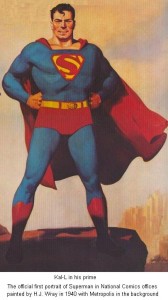
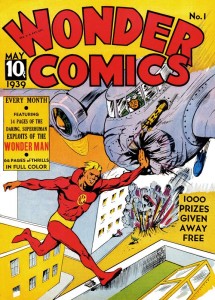
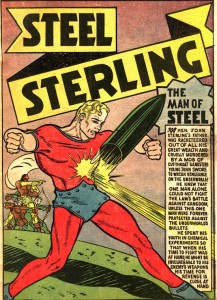
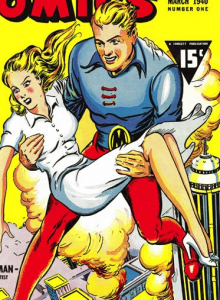
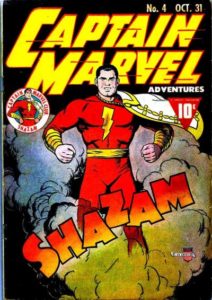
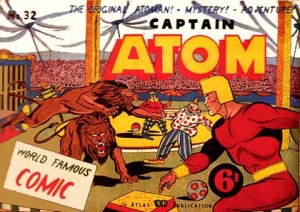
Comments are closed.